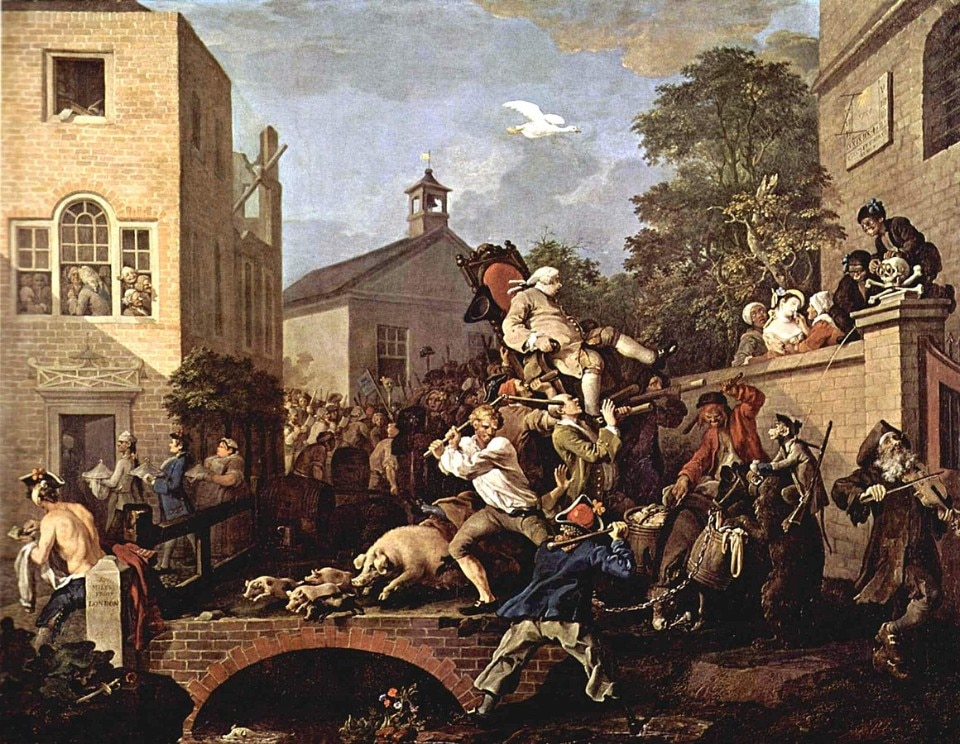Democracy. The word comes from ancient Greek: demos, meaning ‘people’, and kratos, meaning ‘power’. A simple yet disruptive concept: power is not in the hands of a tyrant or an oligarch, but in the hands of the people themselves.
Athens, 5th century B.C. The city teems with life. The sun illuminates the Acropolis, the harbor brims with merchants, and the streets echo with the chatter of the people. In this cradle of Western civilization, a revolutionary idea is taking shape: democracy. All adult male citizens had the right to participate in the Assembly – the beating heart of political life. Here, laws, war, and peace were discussed, deliberated, and voted upon.
It was not a perfect democracy. Women, slaves, metics – foreigners residing in the city – were excluded from political participation. Nevertheless, for the period, it was a revolutionary system.
The Athenian democracy did not last long. It was supplanted by oligarchies and tyrannies, but the idea survived. It crossed centuries, spread throughout the world, and enriched itself with new meanings.
Today, democracy is the most widespread form of government worldwide; an ethos that permeates society, a mosaic of values: equality, participation, justice, and respect.

Recent news of Russian leader Vladimir Putin’s fifth term in office has emerged, consolidating his power by eliminating and obstructing the candidacy of the most formidable political competitors.
In a context of electoral competition vacuum, in which the communist Nikolai Kharitonov came second with 4.3% of the votes, and with the absence of international monitoring missions of the electoral process, President Putin has claimed victory as a unanimous sign of support from the population for his presidency as well as for the invasion war in Ukraine, which began just over two years ago. These were presidential elections that were neither free nor fair, not to mention the tragic event of the assassination of opposition leader Alexei Navalny, which occurred in a prison in the Arctic on February 16th of this year.
Hogarth could afford to satirize power with unprecedented ferocity. While today, in some countries, the intellectual freedom of journalists is often threatened.
William Hogarth, an English master of the 18th century, painted a series of works he called The Humours of an Election. He vividly portrayed the political landscape of Oxfordshire in 1754 and described its democratic system with this series of four oil paintings.
Hogarth, with unparalleled mastery, captured the very essence of the entrenched corruption that permeated parliamentary elections of that period, offering an unveiled look into the morally twisted abyss of politics at that time.

London, 1755. The electoral campaign rages in the fictional city of Guzzledown. Two factions: the ‘New Interest,’ liberal, and the ‘Old Interest,’ conservative. With his sharp irony, William Hogarth immortalized in four paintings the grotesque and chaotic scenes of this political struggle.
In the first painting, An Election Entertainment, the candidates of the ‘New Interest’ gorge themselves in an inn. The younger candidate endures a kiss from the landlady while a child steals his ring. Proudly emblazoned on the waving flag is the motto ‘Liberty and Loyalty.’ The older candidate is harassed by a surly-looking drunkard and a humble cobbler. This unusual trio evokes the figures of the apostles: Judas, Peter, and John, as painted in the Last Supper. Elsewhere, another drunkard raises his glass in a toast to the flag, while his wife accepts a gift and a love letter from an officer, amidst the political whirlwind.
To the left of the painting, a corpulent man in a cassock captures attention, while the orchestra, consisting of an elderly blind violinist, a bagpipe player, a double bassist, and a violinist, entertain the comical characters. Through the window, the turmoil of the opposing party is glimpsed, with a banner extolling marriage and procreation, but a fervent supporter of the ‘New Interest’ overturns the contents of a chamber pot, symbolizing his determination in the political struggle. On the wall above, the vandalized portrait of William III testifies to Hogarth’s respect for good governance.
In the main scene, to the left, the Quaker prepares to distribute gifts to the ladies while reading a note containing a promise of payment. Meanwhile, a young boy is busy preparing a giant punch.
Supporters of the ‘Old Interest’ do not miss the opportunity to express their dissent. Tension thickens as bricks begin to fly through the window, interrupting even the most crucial operations. The secretary, busy counting and separating secure votes from uncertain ones, is taken by surprise by a flying brick, while the mayor, likely enjoying oysters, is assisted by a barber as he faints. Meanwhile, on the right side, an agitated supporter offers money to a Methodist tailor, despite protests from his family.
A bloody chronicle of a decaying political system, shrouded in the shadow of corruption and intimidation, a sad conclusion before the advent of the Great Reform Act.
Hogarth’s works go beyond being mere historical documents. Through his incisive brushstrokes and his ability to visually narrate, the English master raises a deep question about the essence of power and democracy, challenging viewers to reflect on political dynamics.

Chairing the Member, the last painting in the series, embodies the effervescent celebration of triumphant Tory candidates and their supporters, offering a suggestive glimpse into the social and political fabric of an era that shaped British identity.
It is a satirical, fierce portrait that spares no one, from politicians to citizens.
Hogarth could afford to satirize power with unprecedented ferocity. While today, in some countries, the intellectual freedom of journalists is often threatened, just like in Russia.
As Robert Musil wrote: “We are the age of the ballot! The present time is anti-philosophical and vile; it lacks the courage to decide what has value and what does not, and democracy, to put it succinctly, means: ‘Do what happens!’”
Opening image: William Hogarth, An Election Entertainment from The Humours of an Election series, 1755

